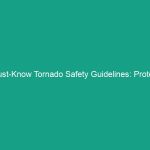Introduction
In today’s fast-paced work Environment, the concept of Psychological Safety in Teams has emerged as a critical factor in ensuring Workplace Safety and promoting a healthy organizational culture. Psychological Safety refers to an environment where team members feel safe to take risks, express their thoughts without fear of negative consequences, and contribute to team discussions openly. This article aims to delve into the significance of psychological safety within the Health, Safety, and Environment (HSE) framework, outlining its impact on team dynamics, regulatory frameworks, best practices, and future trends.
The importance of Workplace Safety cannot be overstated; it is a fundamental component of effective team performance. When employees feel secure in their environment, they are more likely to engage fully, share innovative ideas, and collaborate effectively. In contrast, a lack of psychological safety can lead to disengagement, increased stress, and ultimately, higher turnover rates. Thus, understanding and implementing psychological safety is not just beneficial; it is essential for organizational success.
Understanding Psychological Safety in Teams
To effectively foster Psychological Safety in Teams, it is vital to first understand what it entails. Psychological safety is a concept rooted in the belief that individuals can express themselves without fear of being judged or punished. This environment encourages open communication, constructive feedback, and the willingness to embrace failure as a learning opportunity.
The Origins of Psychological Safety
The term was popularized by Amy Edmondson, a Harvard Business School professor, who defined it as a shared belief that the team is safe for interpersonal risk-taking. Her research emphasizes that teams with high levels of psychological safety are more likely to report errors, seek help, and engage in discussions that foster innovation and improvement.
The Impact of Psychological Safety on Team Performance
Research has shown that teams characterized by psychological safety outperform their counterparts in several key areas. These include:
- Improved Collaboration: Team members are more willing to share ideas and provide feedback.
- Enhanced Creativity: Individuals feel empowered to think outside the box and propose unconventional solutions.
- Higher Engagement: Employees are more invested in their work, leading to lower turnover rates.
Regulatory Frameworks Supporting Psychological Safety
Regulatory frameworks play a crucial role in promoting Psychological Safety in Teams within organizations. Various laws and guidelines mandate the protection of employees’ mental well-being, ensuring that workplaces are not only physically safe but also psychologically supportive.
Key Regulations and Guidelines
Different countries have established laws that require organizations to foster a healthy work environment. Some notable regulations include:
- Occupational Safety and Health Administration (OSHA): In the United States, osha has guidelines that emphasize the importance of mental health in Workplace Safety.
- Health and Safety at Work Act 1974 (UK): This act mandates employers to ensure the health, safety, and welfare of their employees, including psychological aspects.
- Workplace Safety and Insurance Board (WSIB) (Canada): Provides support and guidelines for mental health initiatives in the workplace.
The Role of Leadership in Compliance
Leadership plays a pivotal role in adhering to these regulations. By prioritizing psychological safety, leaders can create a culture of compliance that fosters open dialogue about mental health. This not only helps in meeting regulatory requirements but also enhances overall team performance.
Best Practices for Fostering Psychological Safety
Implementing Best Practices for Psychological Safety in Teams is fundamental to creating an environment conducive to open communication and risk-taking. Here are several strategies that can be employed:
Encourage Open Communication
To create a psychologically safe environment, organizations must prioritize open communication. Regular check-ins and feedback sessions can help team members feel heard and valued. Leaders should actively solicit input from all team members and show appreciation for their contributions.
Normalize Failure as a Learning Opportunity
Organizations should cultivate a culture that views failure as an opportunity for growth rather than a setback. By sharing stories of failure and lessons learned, leaders can reinforce the idea that mistakes are part of the learning process, thus encouraging team members to take calculated risks.
Provide Training and Resources
Offering training programs focused on emotional intelligence, conflict resolution, and effective communication can equip team members with the skills necessary to engage in a psychologically safe environment. Resources such as workshops, seminars, and online courses can bolster these efforts.
Implement Regular Team-Building Activities
Team-building exercises can foster trust and camaraderie among team members. Engaging in activities that require collaboration and teamwork can enhance relationships and help individuals feel more comfortable expressing their opinions.
Case Studies: Organizations Leading the Way
Examining real-world examples can provide valuable insights into how organizations successfully implement Psychological Safety in Teams. Below are a few case studies that highlight effective practices:
Case Study 1: Google’s Project Aristotle
Google conducted a study known as Project Aristotle, which aimed to identify the key factors that contribute to high-performing teams. The findings revealed that psychological safety was the most critical element. Teams that exhibited high levels of psychological safety were more innovative and productive, leading Google to prioritize this aspect in their team management strategies.
Case Study 2: Pixar Animation Studios
At Pixar, the culture of psychological safety is deeply ingrained. The company encourages employees to voice their opinions candidly during creative sessions. This open exchange of ideas has led to the production of numerous successful films, as team members feel comfortable sharing unconventional ideas without fear of criticism.
Case Study 3: The United States Army
The U.S. Army has implemented psychological Safety Measures to enhance team performance in high-pressure environments. By promoting open dialogue and encouraging soldiers to speak up about concerns, the Army has improved decision-making processes and operational effectiveness.
Challenges in Establishing Psychological Safety
While the Benefits of Psychological Safety in Teams are clear, organizations may face challenges when attempting to establish and maintain this environment. Understanding these challenges is essential for devising effective strategies to overcome them.
Resistance to Change
One of the primary challenges organizations face is resistance to change. Employees accustomed to traditional hierarchies may find it difficult to embrace a culture of psychological safety. Leaders must actively work to communicate the benefits and importance of this shift, providing reassurance and support throughout the transition.
Fear of Repercussions
In environments where employees fear negative consequences for speaking up, psychological safety cannot thrive. Organizations must implement clear policies that protect employees from retaliation for expressing their thoughts and concerns. Transparency in addressing issues is crucial to building trust.
Lack of Leadership Support
If leadership does not prioritize psychological safety, efforts to create a supportive environment may falter. Leaders must model the behavior they wish to see in their teams by openly discussing their own challenges and encouraging team members to do the same.
The Future of Psychological Safety in Teams
The future of Psychological Safety in Teams looks promising as more organizations recognize its significance in enhancing workplace culture and performance. Here are a few trends that may shape the future landscape:
Increased Focus on Mental Health
As awareness of mental health issues continues to grow, organizations will likely place greater emphasis on creating psychologically safe environments. This focus will include implementing mental health initiatives, providing resources for employees, and fostering open discussions about mental health challenges.
Integration of Technology
Technology will play a pivotal role in facilitating psychological safety. Tools that enable anonymous feedback, virtual team-building exercises, and real-time communication will empower employees to express themselves freely and connect with their peers.
Global Collaboration and Diversity
As workplaces become increasingly diverse and globalized, understanding different cultural perspectives on psychological safety will be vital. Organizations will need to adapt their strategies to accommodate various cultural norms and communication styles, ensuring that all team members feel included and valued.
Conclusion
In conclusion, fostering Psychological Safety in Teams is not merely an organizational strategy; it is a necessity for creating a thriving workplace culture that prioritizes health, safety, and environment. By understanding its significance, implementing Best Practices, and learning from successful case studies, organizations can unlock the potential of their teams and enhance overall performance.
As we move forward, it is essential for leaders to champion psychological safety within their organizations. By doing so, they will not only comply with regulatory requirements but also cultivate an environment where employees feel empowered, engaged, and committed to their work. Let us take the first step towards creating a psychologically safe workplace and unlock the success that comes with it.


